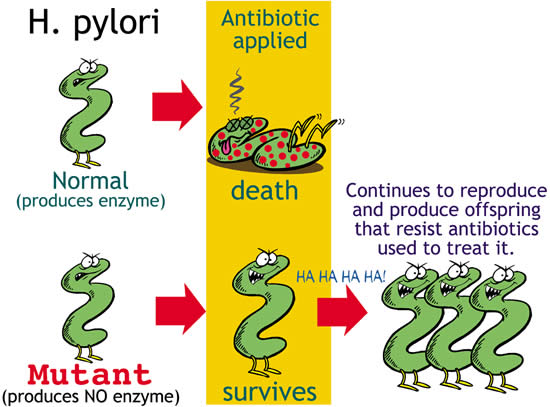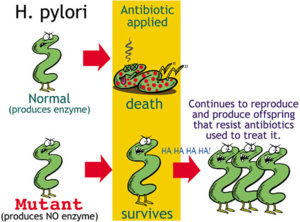Glyphosate is an active ingredient found in herbicides and in Roundup. The World Health Organization (WHO) announced last week that as per its findings glyphosate ranked as one of the most widely used herbicide in the world. It is also “probably carcinogenic to humans ”
A study published in an US based Journal - Society for Microbiology – clearly mentions the fact that there is a definite link between glyphosate and two other commonly used herbicides i.e. Dicamba ad 2-4 D. When bacteria are exposed to these herbicides, they undergo a molecular change and become resistant towards a number of antibiotics which are widely and commonly used, such as and tetracycline, ciprofloxacin and ampicillin, amongst others. These antibiotics are used to treat a wide range of deadly diseases.
Given this scenario, the question that come to mind is that, since glyphosate and 2-4 D have been widely used since decades, there should have been studies that should have documented their resistance towards bacteria? Jack Heinrmann, a professor of genetics at the university of Canterbury, New Zealand, explains that when laboratories tests pesticides for their adverse effects on human lives, they typically tend to “focus on the lethal toxicity". Which in other words means testing laboratories focus their studies on the minimum quantity of herbicide required to overcome or kill an organism.
A study published in an US based Journal - Society for Microbiology – clearly mentions the fact that there is a definite link between glyphosate and two other commonly used herbicides i.e. Dicamba ad 2-4 D. When bacteria are exposed to these herbicides, they undergo a molecular change and become resistant towards a number of antibiotics which are widely and commonly used, such as and tetracycline, ciprofloxacin and ampicillin, amongst others. These antibiotics are used to treat a wide range of deadly diseases.
Given this scenario, the question that come to mind is that, since glyphosate and 2-4 D have been widely used since decades, there should have been studies that should have documented their resistance towards bacteria? Jack Heinrmann, a professor of genetics at the university of Canterbury, New Zealand, explains that when laboratories tests pesticides for their adverse effects on human lives, they typically tend to “focus on the lethal toxicity". Which in other words means testing laboratories focus their studies on the minimum quantity of herbicide required to overcome or kill an organism.
"What makes this study different is that it has focused on non-lethal effects. The effects that we observe require that the bacteria is alive ".
Earlier studies conducted by researchers have revealed that 2-4 D and Dicamba cause resistance to antibiotics. Although glyphosate’s chemical structures differs from Dicamba and 2-4 D, Heineman and his team of researchers thought it prudent to include it as well in their studies. To their surprise, they found that glyphosate also causes, to some degree, resistance to antibiotics.
This is so because as per Heineman herbicides are not designed to be “super toxic” to Salmonella and E.Coli, the bacterias in study. When these bacteria come into contact with a herbicide, they are not killed, because the toxicity levels in the herbicide are not high enough to neutralize them. Thus these bacteria remain alive and engages a defensive mechanism tht activate a deportation protein that neutralizes the toxins. It is this defensive mechanism of these deadly bacteria that acts as a resistance towards antibiotics.
"Exposure makes them more robust pathogenic agents," says Heineman.
He goes to state that this bacterial response is not uniform for all pesticides. Different pesticides produce different bacterial response. In his study, some pesticides have not provoked any response from these bacteria, while in others the response has been dramatic.
For those who would like to belittle or put the results of this study in doubt, Mark Silby, assistant professor of biology at the University of Massachusetts, Dartmouth, says, Heineman’s study "respects the established protocols" and is in line with existing scientific literature.
Mark Hansen, a leading scientist from the Consumers Union also states that:
"This study is carefully designed. This is an extremely important work that shows the complexity of an effect that has not previously thought."
As per Hansen, the defensive mechanism used by these bacteria in response to herbicides was well known and is well documented. Heineman’s study however sheds some light on the defensive mechanisms of these bacteria to non-lethal levels of herbicides and their impact on antibiotics.
Heineman goes on to state:
"These herbicides are being used on such a scale that can be said of them that they are almost ubiquitous."
In the United States, Glyphosate is widely used for growing soybeans (94%) and corn (89%). 2-4 D is the thirds largest herbicide used in the United States while Dicamba is the fifth in the world. The effects of the levels of herbicide used by Heineman and his teams in their study were higher than that which is typically found in food residues but lower than that rural standards.
Hansen concludes that the result of the study conducted by Heineman and his team suggests that we are all at a small risk of dietary exposure. The people who are more at risk are those in the agricultural sector, who come in direct contact with these products as they are applied.
Heineman points out these antibacterial resistance could effect the population of bees, since many hives are now treated with antibiotics.
"The combination of antibiotics and herbicides may compromise the effectiveness of antibiotics" and endanger the lives of bees.
Given the stakes, Hansen says, "it is clear that we must continue this work because it is necessary to know more when these herbicides are used more and more."
References:
http://www.amisdelaterre.org/Nouvel-article,1878.html
http://www.rse-magazine.com/Herbicides-et-antibiotiques-autre-inquetude-sur-le-glyphosate_a1137.html






